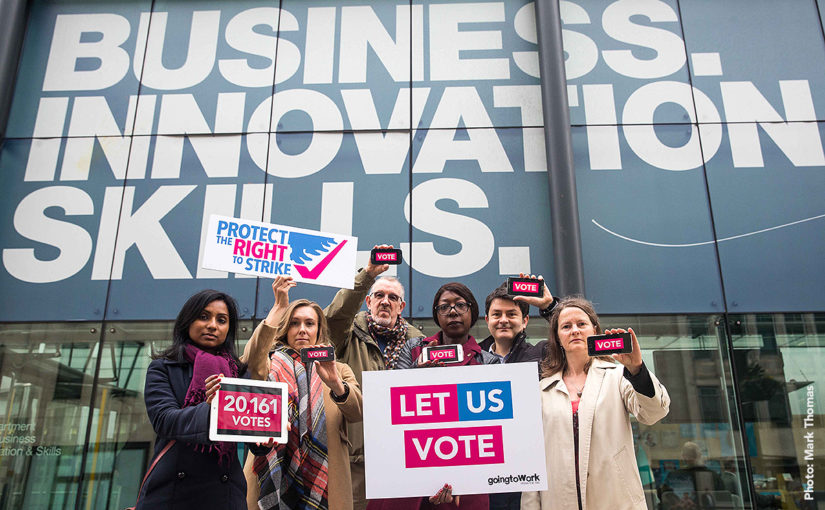Probably the defining issue for unions over the last year has been the government’s Trade Union Act. It’s a wide-ranging collection of restrictions on union’s rights and duties, that make it harder for unions to organise and represent their members, and that undermines British workers’ right to strike.
We’re proud of the concerted and unified campaign that unions and union members mounted against it during its long parliamentary passage. We managed to secure extensive concessions and defeats to some of its worst measures, cutting off harmful proposals that struck at unions’ finances and organisation.
But we also won an interesting positive change from the Government, one that they had tried their hardest to resist. They’ve now conceded an independent review into allowing unions to use online voting for strikes and statutory ballots.
The union ban on online balloting has stuck out like a sore thumb for years. The TUC have been campaigning on it since 2002, so it’s exciting that we might finally be making some progress.
Basically, unions are only allowed to use postal voting for important elections like strike ballots, or choosing their General Secretary. This is written into the 1992 TULRCA act, which stopped unions using workplace balloting, and which has never been updated.
Postal voting is costly, slow, and inefficient. Ballot papers get lost, chucked out with the junk mail, or sit on a shelf for weeks, waiting for a trip to the post box that never comes. Turnouts for postal ballots are low, and this is precisely why the Government are keen not to change the system, even if their stated objection to it is that the technology has not yet been proven secure enough for important decisions.
A major part of the Trade Union Act is the introduction of new ballot thresholds. Now a strike will need to get approval on a turnout greater than 50% in order to be legal.
The stated aim is to encourage higher turnouts and hence more accountability for strikes. But it’s a mathematically illiterate idea that actually makes an abstention count more against a strike than a no vote. Combined with a balloting method that’s proven to depress turnout, it means a considerable hurdle placed in the way of workers balloting to exercise their right to strike.
Unions have already been using online balloting for over a decade in non-statutory elections – the technology is far from new. Companies, political parties and membership organisations use it for major votes. The recent Conservative leadership contest – in effect choosing our Prime Minister – was to have been run by online ballot before Andrea Leadsom pulled out.
What unions have found is that adding an online channel to postal votes (we need to keep a postal channel for those not online), has a modest bump on turnout. It’s nothing like the huge increase from using independently supervised workplace balloting (the voting method we’d most like to see, where agreed scrutineers set up a private voting facility at work, keeping decisions closest to the place where they are relevant), but with the new unfair turnout thresholds any improvement on the effectiveness of the system is very welcome in levelling the playing field a bit.
It’s hard to see how the Government can continue to argue against online voting for unions, but we’re still expecting them to, and that we’ll have to fight all the way for this change.
The next stage is for the Government to kick off a review into the issue, which has to be started by 4 November. We’ll be contributing to the review when we find out more about its terms, and encouraging unions to do the same.
Allowing unions to involve more of our members in some of our biggest decisions is a prize worth fighting for, and will bring our democracy closer in line with the way many workers now expect to be consulted. Please help back the campaign for online voting over the coming months.

